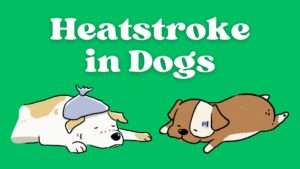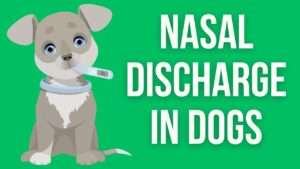Hip dysplasia is a common condition affecting both humans and animals, particularly dogs. It occurs when the hip joint doesn’t develop properly, leading to instability and potential joint damage. Understanding its causes, symptoms, and available solutions is crucial for effective management and treatment.
Contents Overview
Hip dysplasia, a common joint disorder affecting both humans and animals, stems from a complex interplay of genetic predisposition, developmental influences, and environmental factors. Certain breeds, like German Shepherds and Labrador Retrievers, are particularly prone to this condition due to genetic factors.
Symptoms such as difficulty rising, lameness, and muscle atrophy may indicate the presence of hip dysplasia, highlighting the importance of early recognition. Diagnosis involves a combination of physical examination and diagnostic imaging techniques, with treatment options ranging from weight management and medications to surgical interventions.
Prevention strategies, including selective breeding, nutrition, and exercise, play a crucial role in reducing the incidence of hip dysplasia and improving outcomes for affected individuals. By understanding the causes, recognizing symptoms, and exploring comprehensive solutions, we can better manage this challenging condition and enhance the quality of life for those affected by it.
What is Hip Dysplasia?
Hip dysplasia is a developmental disorder that affects the hip joint in dogs. It occurs when the ball and socket of the hip joint do not fit together properly, leading to instability and potential joint damage over time.
Causes of Hip Dysplasia
Hip dysplasia, a condition affecting both humans and our furry companions, manifests as a result of various factors. Understanding the root causes is crucial for effective management and prevention strategies. Let’s delve into the intricate web of influences contributing to hip dysplasia:
1- Genetic Predisposition:
Genetics plays a significant role in the development of hip dysplasia, particularly in certain breeds of dogs. Breeds like German Shepherds, Labrador Retrievers, and Bulldogs are genetically predisposed to this condition. Inherited traits affecting the shape and structure of the hip joint contribute to instability and eventual joint damage.
2- Developmental Factors:
During the critical stages of growth, environmental factors and lifestyle choices can significantly impact the development of the hip joint. Rapid growth during puppyhood, improper nutrition, and excessive exercise exert stress on the developing joint, increasing the likelihood of abnormalities.
3- Environmental Influences:
External factors such as slippery surfaces and obesity can exacerbate hip dysplasia or elevate the risk of its occurrence. Slippery floors contribute to slips and falls, placing undue strain on the hip joint. Similarly, excess body weight places additional stress on the joints, accelerating wear and tear.
4- Hormonal Influences:
Hormonal imbalances, particularly during growth spurts, can interfere with the normal development of the hip joint. Disruptions in hormonal regulation may affect bone growth and remodeling, leading to structural abnormalities and instability in the hip joint.
5- Traumatic Injuries:
Traumatic injuries, such as fractures or dislocations, can disrupt the delicate balance of the hip joint, predisposing individuals to hip dysplasia later in life. Improperly managed injuries or inadequate rehabilitation following trauma can contribute to chronic joint instability and degeneration.
6- Congenital Abnormalities:
In some cases, hip dysplasia may stem from congenital abnormalities present at birth. Malformations in the hip joint or surrounding structures disrupt normal joint function and increase susceptibility to degenerative changes over time.
7- Understanding the Complex Interplay:
Hip dysplasia often arises from a combination of genetic predisposition, developmental influences, and environmental factors. The intricate interplay of these elements underscores the multifactorial nature of this condition, highlighting the importance of comprehensive management and preventive strategies.
Symptoms of Hip Dysplasia
Recognizing these signs is paramount for early detection and effective management. Let’s explore the hallmark symptoms of hip dysplasia:
1- Difficulty Rising:
One of the earliest indicators of hip dysplasia is difficulty rising, particularly after periods of rest. Affected individuals may struggle to stand up, exhibiting stiffness or reluctance to put weight on the affected limb.
2- Lameness:
Lameness, or favoring of one hind limb, is a common symptom of hip dysplasia. Pets may display an uneven gait, limping, or hopping while walking, indicating discomfort or instability in the hip joint.
3- Decreased Activity Levels:
Pets with hip dysplasia often exhibit a decrease in overall activity levels. They may become less eager to engage in physical activities such as running, jumping, or playing, opting for rest instead.
4- Audible Clicking or Popping Sounds:
Audible clicking or popping sounds when moving the hip joint can signify underlying joint abnormalities associated with hip dysplasia. These sounds may occur during walking, running, or when transitioning between different positions.
5- Muscle Atrophy:
Muscle atrophy, or the wasting away of muscle tissue, is a common consequence of hip dysplasia. As the condition progresses, muscles surrounding the hip joint may become thinner and weaker due to decreased use and altered biomechanics.
6- Reluctance to Climb Stairs or Jump:
Pets with hip dysplasia may exhibit reluctance or hesitation when faced with activities that require climbing stairs or jumping. They may avoid these actions altogether or display signs of discomfort while performing them.
7- Behavioral Changes:
Chronic pain associated with hip dysplasia can lead to behavioral changes in affected individuals. Pets may become irritable, withdrawn, or exhibit signs of aggression, reflecting their discomfort and decreased quality of life.
8- Difficulty with Lying Down or Getting Up:
Lying down and getting up can be challenging tasks for pets with hip dysplasia. They may struggle to find a comfortable position or require assistance when transitioning between standing and lying down.
Diagnosis
Diagnosing hip dysplasia involves a comprehensive assessment by veterinary professionals, combining physical examinations with advanced imaging techniques. Let’s explore the diagnostic methods utilized to detect and confirm this common joint disorder:
- Physical Examination:
Veterinarians begin the diagnostic process by conducting a thorough physical examination of the patient. During this evaluation, specific signs and symptoms associated with hip dysplasia are assessed, including gait abnormalities, muscle atrophy, and limited range of motion in the hip joints. Observing how the patient moves and reacts to palpation provides valuable insights into the presence and severity of hip dysplasia.
- Diagnostic Imaging:
Diagnostic imaging techniques play a pivotal role in confirming the diagnosis of hip dysplasia and assessing its severity. The following imaging modalities are commonly employed:
- X-rays (Radiography)
- X-rays are the primary imaging tool used to visualize the hip joint and assess its structure and integrity. Specific positioning techniques, such as the PennHIP method or the Orthopedic Foundation for Animals (OFA) protocol, may be employed to obtain optimal views of the hip joint. X-rays reveal characteristic signs of hip dysplasia, such as subluxation, joint laxity, and osteoarthritic changes.
- Computed Tomography (CT) Scan
- CT scans provide detailed cross-sectional images of the hip joint, allowing for a more comprehensive evaluation of bone and soft tissue structures. CT imaging is particularly useful for assessing complex cases or identifying subtle abnormalities that may not be apparent on conventional X-rays.
- Magnetic Resonance Imaging (MRI)
- MRI offers superior soft tissue contrast and can detect early signs of joint degeneration and inflammation. Although less commonly utilized in veterinary practice due to cost and availability, MRI may be recommended in cases where additional information is needed to guide treatment decisions.
- Hip Scoring Systems:
Various hip scoring systems, such as the Orthopedic Foundation for Animals (OFA) and the British Veterinary Association (BVA) schemes, are used to objectively evaluate hip joint conformation and assess the risk of developing hip dysplasia. These scoring systems rely on standardized criteria to assign a numerical score to each hip joint, with higher scores indicating greater severity of dysplasia.
Treatment Options
Let’s delve into the diverse array of treatment options:
- Weight Management:
Maintaining a healthy body weight is paramount for managing hip dysplasia, as excess weight places additional strain on the hip joints. A tailored diet and exercise regimen, overseen by veterinary professionals, can help individuals achieve and maintain an optimal weight, reducing stress on the affected joints.
- Medications:
Non-steroidal anti-inflammatory drugs (NSAIDs) and pain relievers are commonly prescribed to alleviate discomfort and inflammation associated with hip dysplasia. These medications help manage pain and improve mobility, enabling individuals to engage in daily activities more comfortably. However, long-term use requires careful monitoring for potential side effects.
- Physical Therapy:
Physical therapy plays a crucial role in managing hip dysplasia by enhancing muscle strength, joint stability, and range of motion. Therapeutic exercises, hydrotherapy, and massage techniques are employed to improve muscle tone, support the affected joints, and promote overall physical well-being. Rehabilitation programs are tailored to the individual’s specific needs and may be conducted under the guidance of veterinary rehabilitation specialists.
- Nutritional Supplements:
Supplements such as glucosamine, chondroitin sulfate, and omega-3 fatty acids may be beneficial in supporting joint health and reducing inflammation associated with hip dysplasia. These nutritional supplements help maintain cartilage integrity, improve joint lubrication, and mitigate the progression of degenerative changes in the hip joints.
- Surgical Interventions:
In cases of severe hip dysplasia or when conservative measures fail to provide adequate relief, surgical intervention may be considered. The following surgical procedures are commonly performed to address hip dysplasia:
- Total Hip Replacement (THR)
- THR involves replacing the damaged hip joint with prosthetic components, restoring normal function, and alleviating pain. This highly effective procedure is reserved for cases with significant joint degeneration and impaired mobility.
- Femoral Head Ostectomy (FHO)
- FHO entails removing the femoral head (ball portion of the hip joint) to alleviate pain and restore mobility. This procedure is often recommended for smaller dogs or individuals with concurrent health issues that preclude total hip replacement.
- Assistive Devices and Lifestyle Modifications:
Utilizing assistive devices such as orthopedic beds, ramps, and harnesses can help individuals with hip dysplasia navigate their environment more comfortably. Additionally, modifying the home environment to minimize slippery surfaces and providing supportive bedding can enhance safety and mobility for affected individuals.
Prevention Strategies
By implementing proactive strategies, individuals can safeguard the health and well-being of their furry companions. Let’s explore effective prevention strategies for hip dysplasia:
- Selective Breeding Practices:
- Selective Breeding Practices:
Responsible breeding practices play a pivotal role in reducing the incidence of hip dysplasia in susceptible dog breeds. Breeders should prioritize breeding from healthy, genetically sound parents with certified hip scores. Screening breeding stock for hip dysplasia using standardized scoring systems, such as the Orthopedic Foundation for Animals (OFA) or the British Veterinary Association (BVA) schemes, helps identify individuals with optimal hip joint conformation and minimize the transmission of predisposing genes to future generations.
- Nutritional Support:
Providing a balanced and nutritious diet is essential for promoting optimal bone and joint health during growth and development. High-quality commercial diets formulated to meet the nutritional needs of different life stages can support healthy skeletal development and minimize the risk of hip dysplasia. Additionally, dietary supplements containing glucosamine, chondroitin sulfate, and omega-3 fatty acids may offer added support for joint health and mobility.
- Controlled Exercise Regimens:
Moderate, low-impact exercise is beneficial for maintaining muscle tone, joint flexibility, and overall fitness without placing excessive strain on developing joints. Avoiding activities that involve high-impact jumping or repetitive stress on the hip joints, particularly during puppyhood, helps minimize the risk of trauma and joint instability. Instead, focus on activities such as walking, swimming, and gentle play to promote physical fitness and mental stimulation.
- Environmental Modifications:
Creating a safe and supportive environment for dogs at risk of hip dysplasia can help minimize stress on the hip joints and reduce the likelihood of injury. Providing non-slip flooring surfaces, especially in areas where dogs spend a significant amount of time, helps prevent slips and falls that can exacerbate joint problems. Additionally, maintaining a clutter-free living space and using supportive bedding with adequate cushioning can enhance comfort and support for dogs with hip dysplasia.
- Regular Veterinary Check-ups:
Routine veterinary examinations are essential for monitoring the health and well-being of dogs and identifying early signs of hip dysplasia. Veterinarians can perform physical evaluations, assess gait and mobility, and recommend appropriate screening tests, such as hip X-rays, for at-risk individuals. Early detection enables timely intervention and management strategies to mitigate the progression of hip dysplasia and improve long-term outcomes.
- Weight Management:
Maintaining a healthy body weight is critical for minimizing stress on the hip joints and reducing the risk of developing hip dysplasia. A balanced diet and regular exercise tailored to individual energy requirements and nutritional needs help prevent obesity and maintain optimal body condition. Veterinary guidance and monitoring are essential for achieving and maintaining a healthy weight throughout all life stages.
Bottom Line
Hip dysplasia poses significant challenges for affected individuals and their caregivers. By understanding its causes, recognizing symptoms, and exploring available solutions, pet owners can take proactive steps to manage the condition effectively. Early diagnosis and comprehensive treatment plans tailored to the individual’s needs are key to optimizing the quality of life and mobility for pets living with hip dysplasia. Through a combination of preventive measures, lifestyle modifications, and veterinary interventions, individuals can navigate the complexities of hip dysplasia with care and compassion.
Key Takeaways
- Causes:
-
- Genetic predisposition is a significant factor, with certain breeds being more susceptible.
-
- Developmental influences, such as rapid growth and improper nutrition, can contribute to joint abnormalities.
-
- Environmental factors like slippery surfaces and obesity can exacerbate hip dysplasia.
- Symptoms:
-
- Difficulty rising, lameness, and decreased activity are common signs.
-
- Audible clicking in the hip joint and muscle atrophy may also be observed.
-
- Early recognition of symptoms is crucial for timely intervention.
- Diagnosis:
-
- Diagnosis involves a combination of physical examination and diagnostic imaging techniques.
-
- X-rays, CT scans, and MRIs may be used to visualize the hip joint and assess its structure.
-
- Hip scoring systems provide objective measures of joint conformation and dysplasia severity.
- Treatment Options:
-
- Weight management helps reduce stress on the hip joint.
-
- Medications like NSAIDs alleviate pain and inflammation.
-
- Physical therapy improves muscle strength and joint function.
-
- Surgical interventions like total hip replacement or femoral head ostectomy may be necessary in severe cases.
- Prevention Strategies:
-
- Selective breeding practices aim to reduce the prevalence of hip dysplasia in susceptible breeds.
-
- Providing a balanced diet and controlling exercise regimens promote optimal skeletal development.
-
- Environmental modifications, regular veterinary check-ups, and weight management strategies minimize risk factors.
- Conclusion:
-
- Understanding the causes, recognizing symptoms, and exploring treatment options are essential for managing hip dysplasia effectively.
-
- Prevention strategies, including selective breeding, nutrition, exercise, and regular veterinary care, play a vital role in reducing the incidence of hip dysplasia and improving outcomes for affected individuals.

Ryan Farmer, DVM, is a veterinarian based in Houston, Texas. He earned his Doctor of Veterinary Medicine from the University of Missouri-Columbia and is the owner of EaDo Veterinary Clinic.



































+ There are no comments
Add yours